 Fetishised, Masculine, Meditative, Queer, Rebellious. Five vessels are used to explore their own identities and those imposed upon them. We invite you to come and observe this silent piece of performance art.
Fetishised, Masculine, Meditative, Queer, Rebellious. Five vessels are used to explore their own identities and those imposed upon them. We invite you to come and observe this silent piece of performance art.
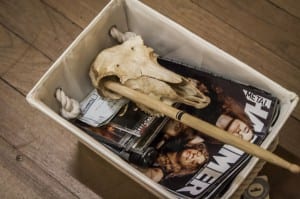
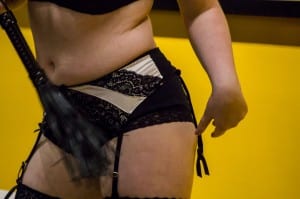
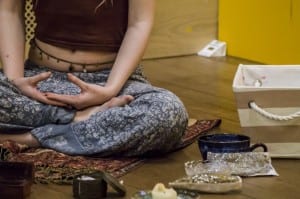
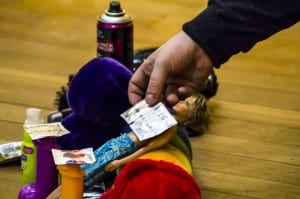
A performative piece of art with five performers that explores identity under the constraints of social conventions, by forming their own appearance and having it altered by the other bodies, exploring the way in which the site manipulates and influences people’s perceptions of identity.
Our performance, Skin Deep(er), is not a piece of theatre and is very much rooted into performance art. Drawing our initial inspiration for the performance from Marina Abramovic’s piece Rhythm 0, we wanted to explore the way in which Abramovic could encapsulate her audience by standing still and remaining focused for long periods of time. As a group of 5 people with diverse body types, sexualities and backgrounds, we decided that the main focus within our performance would be identity in art, we wanted to challenge the audience’s perceptions of what makes the human body art while also trying to present that art is more than just what we see, it is about the person that created it. Around the Usher Gallery we noticed the majority of the nude paintings and sculptures were of men and women with perfect bodies. The men were mostly sculpted Adonises, with six-pack abdominal muscles and well-built arms and chests, and the women were voluptuous beauties with curves in all the right places and perfect, gravity defying breasts. We noticed that one of the things the gallery was missing was a representation of an imperfect body. This lead us to a decision to begin our piece in just underwear, as we were given an opportunity to illustrate that any human body is Art, not just those that are deemed beautiful or ‘perfect’.
We built upon this by taking influence from Brett Bailey and his piece Exhibit B, a piece of performance art focussed on the presentation of the native African body in the form of a human zoo.. Despite Exhibit B receiving critical backlash due to Bailey’s white, South African background, we took influence from Bailey’s decision to present the different kinds of native African bodies and their cultures within their enclosures and utilised this to dig deeper into our identities and portray our personas in a way similar to what Bailey did in Exhibit B. The difference between our piece and Exhibit B was that the personas we exhibited were personal to us, we weren’t trying to immortalise a culture of people, we were trying to present what made us who we were in what we were wearing, what we included in our enclosure and what was written on the cards to be handed out to spectators if they came close to us. in my enclosure, I wanted to present my sexuality.

For a module that was often slated by older students, I was pleasantly surprised to find that Site-Specific Performance was much more interesting than it had been made out to be. When we were given the chance to explore the site, I was impressed by the potential as I felt that the site could offer inspiration to an incredible range of performances due to it’s combination of Art and History. The Collection was particularly impressive as all the history it presented was localised to Lincoln, as opposed to the general history of Museums I have visited in the past.
I felt that the localisation of the Museum exhibits was notable as it could inspire a performance based on one of the events depicted within the Collection, for example I think it’d be interesting to see a performance based on a Viking or Celtic invasion, perhaps depicting a force similar to the Vikings/Celts “invading” the museum. Of course this is just an idea, as I’m not sure I completely grasp exactly what constitutes as a Site-Specific Performance in comparison to a performance in an unconventional setting. This is something, I hope, becomes clearer to me in the coming weeks, as I feel that it might hinder my progression through the module.
I was keen to get back in to Site-Specific and broaden my understanding on the topic, and upon learning that we would be watching “The Artist Is Present”, a Documentary about a large piece in the Museum of Modern Art showing a collection and several reperformances of Marina Abramovic’s work, I was even more eager to get to the seminar later in the day as I had heard of Marina Abramovic’s work previously (Specifically Rhythm 0 and The Great Wall Walk). Rhythm 0 is a piece of her’s that really astounded me when I first heard of it, I felt that it’s trial of the relationship between Audience and Performer was truly fascinating to read about. The observation of the audience beginning very modestly and being gentle with what they were doing and then becoming more aggressive with their actions as time went on Marina remained passive is a huge comment on human nature and the way we react to the opportunity to hurt someone who won’t fight back. Another part of Rhythm 0 that really struck me was her pure dedication to the performance, and it is something that has clearly inspired several performance artists and site-specific performances, one performance I feel was inspired by this is a piece that took place in the window of Regent Street’s “Lush” store, where a 24 year old woman was subjected to several experiments that would be performed on animals during the testing of cosmetic products. I feel the artist was not inspired by Rhythm 0 itself but more Abramovic’s dedication and stamina within Rhythm 0, and from what I learned after watching “The Artist is Present”, her full dedication to all of her pieces.
I am still unsure as to whether I truly do understand what makes a performance Site-Specific, but I do believe that I am gaining a better understanding of it the further we progress through the module, as I’m sure is intended. At the moment, I feel what makes a performance Site-Specific is that that performance is directly drawing influence and inspiration from its location, for example, the piece we will begin working on for the final performance should be specifically be performed only in Art Galleries.
In week 4, everything fell into place for me. Alongside the extensive work we did as a group I order to prepare for the first pitch of our performance, it finally clicked what exactly Site-Specific was. I wasn’t far off beforehand I assuming that whatever piece we created had to be built to be performed in Art Galleries, except it’s far more specific I that. I realised that our performance actually had to be created specifically for a certain location inside the Usher Gallery, what I originally thought was Site-Specific Performance was actually a Site-Sensitive Performance, a phrase often used to describe performances created for the Edinburgh Fringe Festival that later goes onto the tour the country. (Wright, 2013). To conclude, Site-Specific performance “refers to a staging and performance conceived on the basis of a place in the real world (ergo, outside the established theatre).” (Pearson, 2010)

As we began to work on our piece, we started as any other group does; discussing a concept, A LOT. The fact that we spent so much time talking about our concept rather than actually doing something with it is probably something that hindered us greatly during our performance process, we seemed to view our meetings as more of a chance to discuss the theory behind it in order to remind ourselves that what we were doing is relevant to the module, or in some cases simply to remind ourselves that we didn’t have nothing, which is what it felt like during the moments where we had a concept, knew exactly what we wanted to do with our concept, but hadn’t actually put it on its feet yet.
Influence from Marina Abramovic
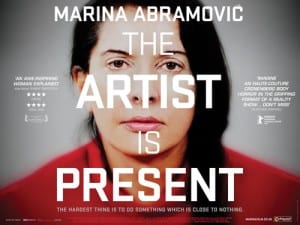
As mentioned in the opening section, Marina Abramovic was the initial inspiration for our performance. We enjoyed how dedicated she was to her art and how much stress she would put her body through for some pieces such as Rhythm 0 and The Artist is Present. It was the uniqueness of her work that inspired the original concept for our performance Skin Deep(er).
Our original concept was to analyse the public’s perceptions of a person’s background and identity in a piece that would last the entire day in the gallery by presenting them with different appearances throughout the day some examples of which being: a man in a suit, a man dressed in ‘punk’ style clothes, a woman in a sexual outfit, a man with tattoos in just underwear and a woman in plain underwear. There were of course several more costume options as we wanted to alternate who was on show at certain points throughout the day. To document the spectator’s perceptions, we were going to ask them to fill out a short, anonymous questionnaire with basic questions regarding that persona’s background, i.e. what is this person’s sexuality?, does this person have a criminal record?, describe this person in one word. After our first pitch, however, we realised that this did not have much to it, and using the questionnaires as a form of documentation would probably not work as we felt it would be too much to ask a spectator to fill out a questionnaire, which in itself is quite a rigorous form of documentation.
Influence from Brett Bailey

Brett Bailey’s piece Exhibit B was instrumental in the way it evolved our original concept into our final performance concept. The human zoo aspect of Exhibit B truly defines our finished product, we decided to limit the personas we each showed as a person to one that is personal to us and present them in a human zoo style with enclosures that reflect these personas as well taking our original idea of using a costume as a way to present our identities. We also wanted the audience to react with us in a similar way to how they would in a zoo, by walking around the enclosures and observing the ‘animals’ in their cages while we lived inside our enclosures.
We took great care in order to not include one of the aspects of Exhibit B, whether it was intentional on Brett Bailey’s part or not, his piece was viewed as offensive by many due to its representation of native Africans despite Bailey’s white, south African background, and this is something we wanted to avoid at all costs.

A book given to us by our lecturer, Exercises for Rebel Artists: Radical Performance Pedagogy by Guillermo Gomez Pena and Roberto Sifuentes, was ultimately a huge part in the redesigning of our performance, particularly when it came to building our personas. There were several exercises within this book that assisted us in this, one that was particularly helpful was “Creating Tableaux Vivants” as it supplied is with ideas on the kind of persona, or body, that we wished to represent. My own persona was based upon my sexuality, I wanted to create an vision of gay person actually created by a gay person. My intention with my costume was to prove a point – anyone, no matter what they look like, can be gay, and that it is the stuff they fill their life with and who they’re attracted that creates their sexuality, not the clothes that they wear. It is when I start building my enclosure after getting dressed that people should start to realise that I am representing a gay person. Of course it was also important for me to illustrate the stereotypes society puts upon gay people, one of the biggest stereotypes being that “gay men are more likely than any other group to act like sex nuts” (Audacious Epigone, 2007)
The Queer Body
Condoms
Lubricant
A large, phallic plush toy
A Ken Doll
Hairspray
Antiperspirant and Body Spray
A Smartphone with Grindr on the screen.
Two Penis shaped shot glasses
Various expensive hair products
A Men’s Health Magazine
A Hairbrush
A Hair Dryer
Hair Straighteners
Above is a list of items that were used in my enclosure, which was informed by another exercise from Pena and Sifuentes’ book entitled “human altars” in which we had to take items that are personal to us and build a shrine for ourselves, this was our overall concept for the enclosures that we built for ourselves during our performance. Within my enclosure I wanted to portray the stereotypes of gay men being obsessed with sex and how they look. The numerous phallic objects and sex related items in my enclosure was meant to portray societies obscene view of gay men and the abundance of hair care products was intended to portray the impression of homosexuals being vain. One of my items worked for stereotypes: the Men’s Health magazine. Not only did this depict the obsession with how I look with its content being about losing weight and getting the perfect body, it was also filled with pictures of half-naked men with exceptionally defined bodies which, due to the inherent lack of gay porn magazines in society, doubles as softcore pornography, again illustrating that gay men are obsessed with sex.
The final part of building our personas were the cards to be given out to the audience if they came close, these were to include a defining statement about our personas, a quote that fits our personas, a personal confession that relates to our personas and a final statement about ourselves.
My body does not define my sexuality.
“Gay men are more likely than any other group to act like sex nuts” – Audacious Epigone.
My school told my parents my sexuality, hoping they would punish me.
I am the first in my family to go to university.
The process behind these cards evolved from an idea where we would each read a poem, or a lyric, that is personal to us while living within our enclosures, however we felt that remaining silent throughout the piece was much more effective as it allowed spectators to fully absorb how we looked and what was in our enclosures. It also aided in presenting ourselves in a piece of art, art doesn’t talk, art is there, silently to be observed. We felt that talking detracted too much from what we looked like, so we decided to create these cards in order to have a similar effect that we wished our poems would have upon the audience.

Our performance went ahead without a problem, as performers we were all incredibly focussed, we had more spectators than we had anticipated due to another performance of the day, Picture This, having directed people to the room we were performing in as part of their performance, however this did not affect us in any way and we remained focussed. Overall our performance lasted around an hour, we began all in plain black underwear, every 3 minutes we would put an item of clothing and proceed to stand in neutral until the next item of clothing. Once we were fully dressed, we each went around the room and forcibly manipulated the person to our left in a Tableux to present their designated body (Fetishised, Masculine, Meditative, Queer, Rebellious), after which we then began to build our enclosures whilst on our knees. Taking each item out of our identical baskets very carefully and placing them down gently. After we have spent some time living in our enclosures, presenting how our personas are deemed to act by society, we slowly and delicately being to pack our enclosure back away before standing up and performing an exaggerated version of our tableuxs before we began to build our enclosures. Finally, we begin to undress, stripping ourselves down every 3 minutes back to the blank canvas that stood before the spectators at the start the performance.
If I was to do this performance again, I would make more of the enclosures, emphasising the human zoo feeling and I feel it would be interesting to try and create some form of physical barrier between the audience and the performers. I would also try and make it clearer to the audience that instead of sitting down, they should have walked around and observed us up close in order to get the small nuances of the performances (for example, I spent most of my time in my enclosure drawing large penises on the men in the Men’s Health magazine). This would’ve also meant that more people would have received cards from us, meaning that more audience members would understand the performance completely. However I feel the performance was a great success and it was interesting for me to engage in performance art, as it is a medium of performance that was new and refreshing to me.
Bibliography:
– Audacious Epigone, 2007. Gay guy are obsessed with sex because they, and there partners, are guys. The Audacious Epigone, [blog] 11th October. Available at: <http://anepigone.blogspot.co.uk/2007/10/gay-guys-obsessed-with-sex-because-they.html> [Accessed 1st May]
– Bailey, B., 2014. Exhibit B. [Performance Art] London: Barbican Theatre, 23rd September.
– Marina Abramovic: The Artist is Present, 2012. [Film] Directed by Matthew Akers and Jeffrey Dupre. USA: Show of Force, AVRO Close Up and Dakota Group.
– Pearson, M. 2010. Site-Specific Performance: London, Palgrave Macmillan.
– Pena, G. G. and Sifuentes, R., 2011. Exercises for Rebel Artists: Radical Performance Pedagogy. Oxon: Routledge.
– Wright, S., 2013. Towards a Lexicon of Usership. [pdf] Museum of Arte Util. Available at: <http://museumarteutil.net/wp-content/uploads/2013/12/Toward-a-lexicon-of-usership.pdf> [Accessed 25th January 2015]

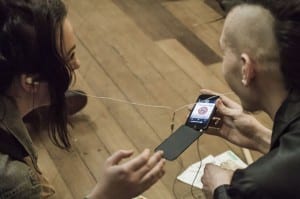

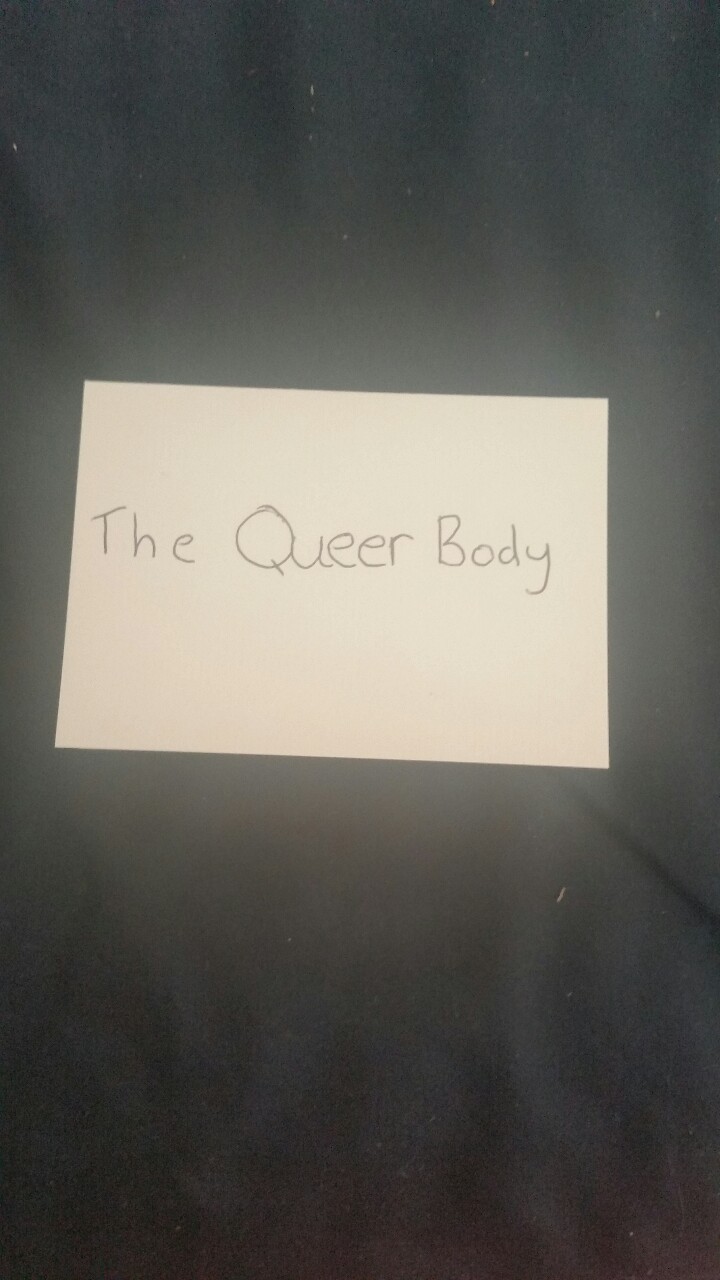
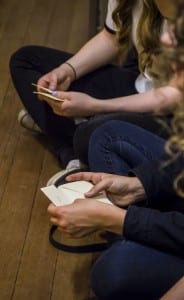
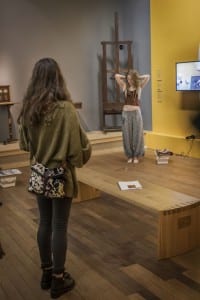
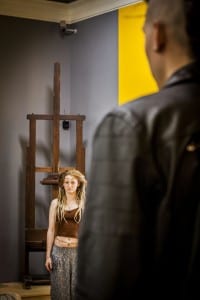
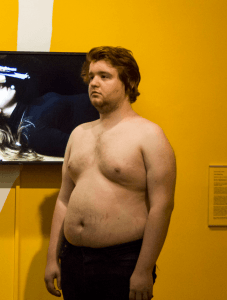
Recent Comments